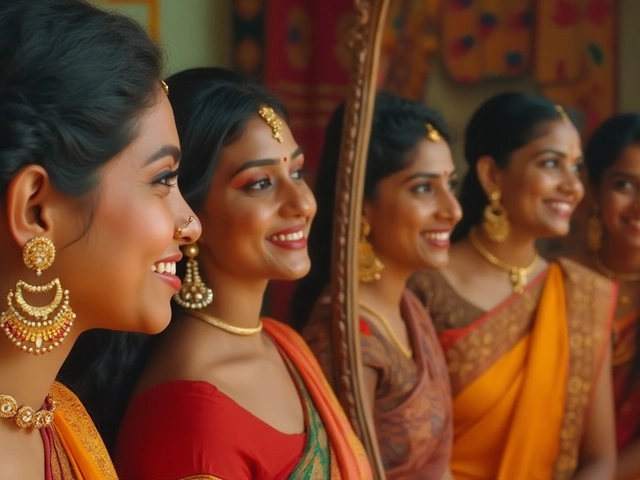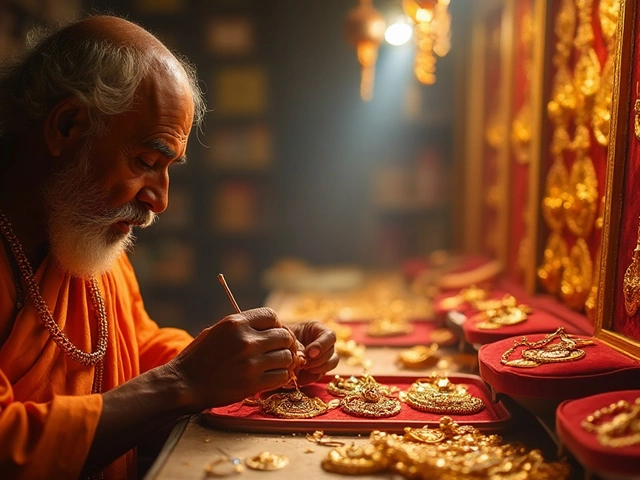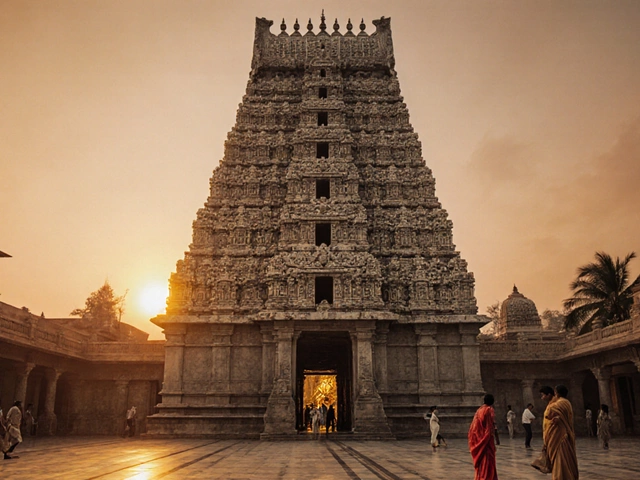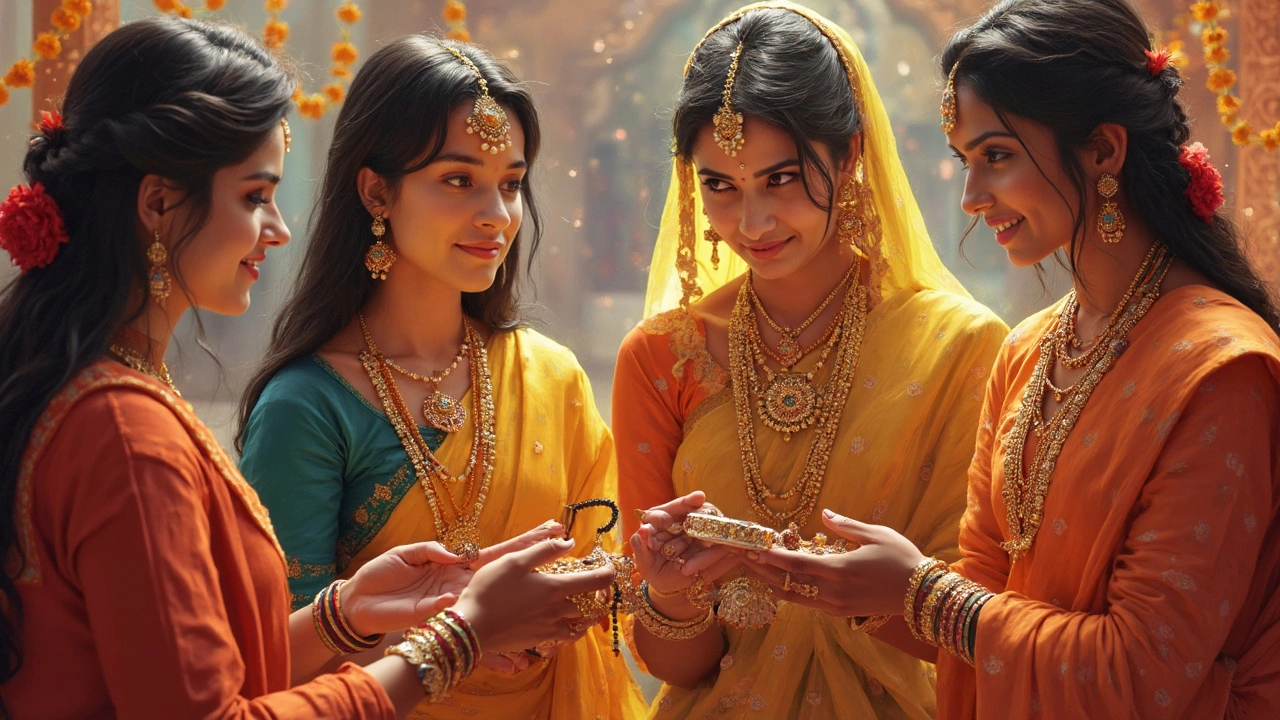
Ever seen those sleek black-beaded necklaces on married women and wondered if they fit into Islamic rules? You’re not alone. In Muslim circles, people talk a lot about what’s actually okay to wear, especially when it comes to jewelry with strong cultural roots like the mangalsutra.
Here’s the thing: black beads aren’t just a style choice—they carry big meaning in Hindu weddings, but the rules in Islam are different. Sometimes, people don’t realize how much of what we wear is influenced by what our families and neighbors do, rather than anything strictly religious.
If you’re from a mixed cultural background or planning a wedding, navigating all these traditions can get a bit tricky. It’s super common for my cousins or even my son Eamon’s classmates’ moms to ask whether it’s respectful for Muslim women to wear mangalsutras or any black bead necklaces.
The best approach? Look at the actual teachings and mix them with a little common sense. Let’s break down what’s cultural, what’s religious, and where there’s room to make your own choices—without stepping on anyone’s toes.
- What Do Black Beads Mean in South Asian Culture?
- Islamic View on Wearing Black Beads
- Mangalsutra: Tradition or Religion?
- Tips for Choosing Wedding Jewelry in Islam
- How Culture and Faith Mix in Daily Life
What Do Black Beads Mean in South Asian Culture?
Black beads aren't just for decoration in South Asian weddings—they pack centuries of meaning. In Hindu tradition, especially across India and Nepal, black bead necklaces called mangalsutras are the must-have symbol for married women. People believe these beads protect a woman and her marriage from bad luck or the "evil eye." It’s not just superstition—older relatives often talk about the mangalsutra as a badge of married life, kind of like a wedding ring in Western cultures.
These necklaces usually mix black beads with gold, sometimes with small pendants or charms. Different regions have their own spin: Some, like in Maharashtra, make mangalsutras with two gold cups and lots of tiny black beads, while others might go for chunky designs or add colored gems. The core idea stays the same—black beads stand for strength, protection, and marital commitment. In the world of black beads Islam, though, it’s not a religious practice, but more of a cultural thing passed around generations.
Outside of Hindu families, you’ll see black beads in Buddhist and sometimes Christian South Asian communities too, usually tied to local meanings or family customs. It’s just part of the neighborhood code, showing who’s married or honoring family tradition.
It’s easy to mix up these cultural symbols with religious rules, especially if you’re from a diverse city where everyone blends traditions. But at the core, black beads in South Asia are about marriage, community identity, and a little bit of folk protection that’s stood the test of time.
Islamic View on Wearing Black Beads
So, what’s Islam’s take on black beads? Here’s where things get interesting. There’s actually nothing in the Qur’an or hadiths that talks specifically about black bead necklaces or mangalsutras. That means there’s no direct religious command, for or against, wearing them. The main concern for Muslims is usually about copying practices tied to other faiths, especially stuff that’s seen as being religious.
Many scholars point out a simple rule: if something’s done only for style or with a culture’s habit and not as a symbol of another religion, it’s usually fine. But if those beads have a meaning that ties back to a religious ritual or belief outside of Islam, wearing them gets more sensitive.
For example, in Hindu traditions, the mangalsutra—with its black beads—symbolizes a woman’s marital status and carries spiritual meaning. If someone wears it with that intent, a lot of Islamic scholars would say to avoid it. But if you’re rocking a plain black bead necklace just for the look or as family jewelry, and there’s zero religious intent, most opinions say it’s not a big deal.
- Islam encourages modesty and doesn’t restrict general jewelry, as long as the item isn’t worn for show-off or to imitate any non-Islamic faith’s rituals.
- Wearing symbols of another religion for their religious meaning is considered crossing the line.
- When in doubt, talking to a local imam or a trusted scholar is the easiest way to get a straight answer for your specific situation.
Here’s a quick table to summarize how different Muslim scholars view the big question about black beads Islam:
| Scholar or Council | View on Black Beads |
|---|---|
| Darul Uloom Deoband (India) | Discouraged if for Hindu ritual; fine for plain style. |
| Al-Azhar (Egypt) | Permissible unless linked to another faith’s religious intent. |
| Islamic Fiqh Academy | Focus on intent; not a problem without religious meaning. |
| Local South Asian Imams | Differ by region but agree intent matters most. |
The bottom line: Islam focuses more on what something means to you, not just what it looks like. Planning to wear black beads? Ask yourself if it's about style, tradition, or something spiritual. That’s what makes all the difference.
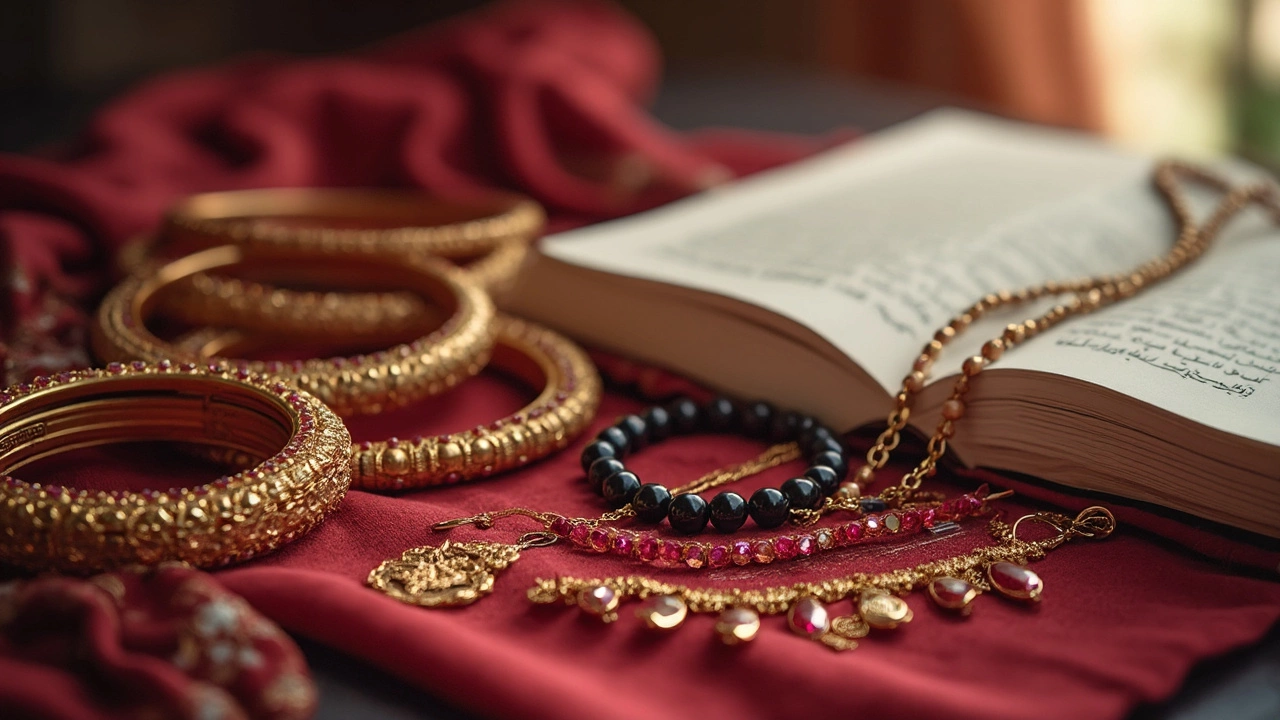
Mangalsutra: Tradition or Religion?
Alright, so here’s where things get interesting. The mangalsutra isn’t just some random piece of jewelry. It’s a necklace, usually made with black beads and gold, that has been part of Hindu wedding ceremonies for generations. In those communities, it’s a symbol that a woman is married, kind of like a wedding ring in Western culture. The story goes way back—some believe as far as the 6th century AD.
But what about in Islam? The short answer: the mangalsutra isn’t actually a religious thing for Muslims. You won’t find anything about black beads or mangalsutras in the Quran or Hadith. Islamic marriage traditions don’t mention this necklace at all. For Muslims, the marriage contract—called the Nikah—is what really seals the deal. Wearing a special necklace isn’t required, spiritually or socially, in traditional Islamic practice.
Here’s where it gets a bit mixed up. In places like India and Bangladesh, where cultures overlap a lot, it’s not rare to see Muslim women wearing black-beaded necklaces—sometimes just for fashion or to blend in, sometimes from family expectations. But those who want to stick closely to Islamic jewelry rules usually skip the mangalsutra, because it’s seen as a religious tradition from Hinduism, not part of Islam.
- If you’re Muslim and like how a mangalsutra looks, you’re not breaking any rules just by wearing black beads. The problem comes if you think it’s a must-have for a marriage or if you wear it for religious reasons tied to another faith.
- A lot of Islamic scholars recommend avoiding religious symbols from other faiths—not because black beads are bad, but to keep things clear and simple about your own beliefs.
- If your family wants you to wear jewelry as a sign of marriage, pretty much any necklace or ring (with a simple design) works just fine in Islam.
So, bottom line: the mangalsutra is about tradition, not religion, when it comes to Islam. If you love the look, go for it, but there’s no religious obligation at all for Muslims to wear it.
Tips for Choosing Wedding Jewelry in Islam
When it’s time to buy wedding jewelry as a Muslim, it’s not just about looking good. You’ve got to think about cultural habits, religious guidelines, and sometimes family pressure. Here’s what helps most people make the right call:
- Keep it simple and respectful. Islam encourages modesty for both men and women. Super flashy jewelry or pieces that draw too much attention aren’t the best fit, especially at religious events.
- Know the significance. A mangalsutra with black beads is directly linked to Hindu customs—there’s no equivalent in Islamic tradition. Wearing it just as a design is fine if it doesn’t signal a religious meaning, but having it as a religious token can confuse stuff. For Muslims, wedding jewelry isn’t about beads, but about intention and modest style.
- Gold is allowed (for women). Pure gold jewelry is a classic in Muslim weddings since there’s a strong tradition of giving mahr (a gift from groom to bride) as jewelry. Men, on the other hand, can’t wear gold based on established Hadiths. Silver is fine for them.
- Skip symbols from other religions. Anything with idols, religious script from another faith, or symbols that don’t match Islamic beliefs should be avoided—even if it looks cool.
- Personal comfort matters. If you’re not comfortable blending in a piece with tricky origins—like the black beads—just talk to your family. Usually, there’s a way to keep everyone happy with a unique, but respectful, design.
For folks who love data, take a look at this quick comparison:
| Jewelry Type | Allowed in Islam? | Traditionally Islamic? | Common in Weddings? |
|---|---|---|---|
| Gold (women) | Yes | Yes | Yes (very common) |
| Gold (men) | No | No | Only for women |
| Silver | Yes | Yes | Common for men and women |
| Black Beads (Mangalsutra) | No religious link, not recommended as a symbol | No | Cultural, not Islamic |
Always double-check with someone knowledgeable if you’re stuck. Many young couples I know end up customizing a traditional set to match their faith and style—it solves a lot of drama before it even begins.
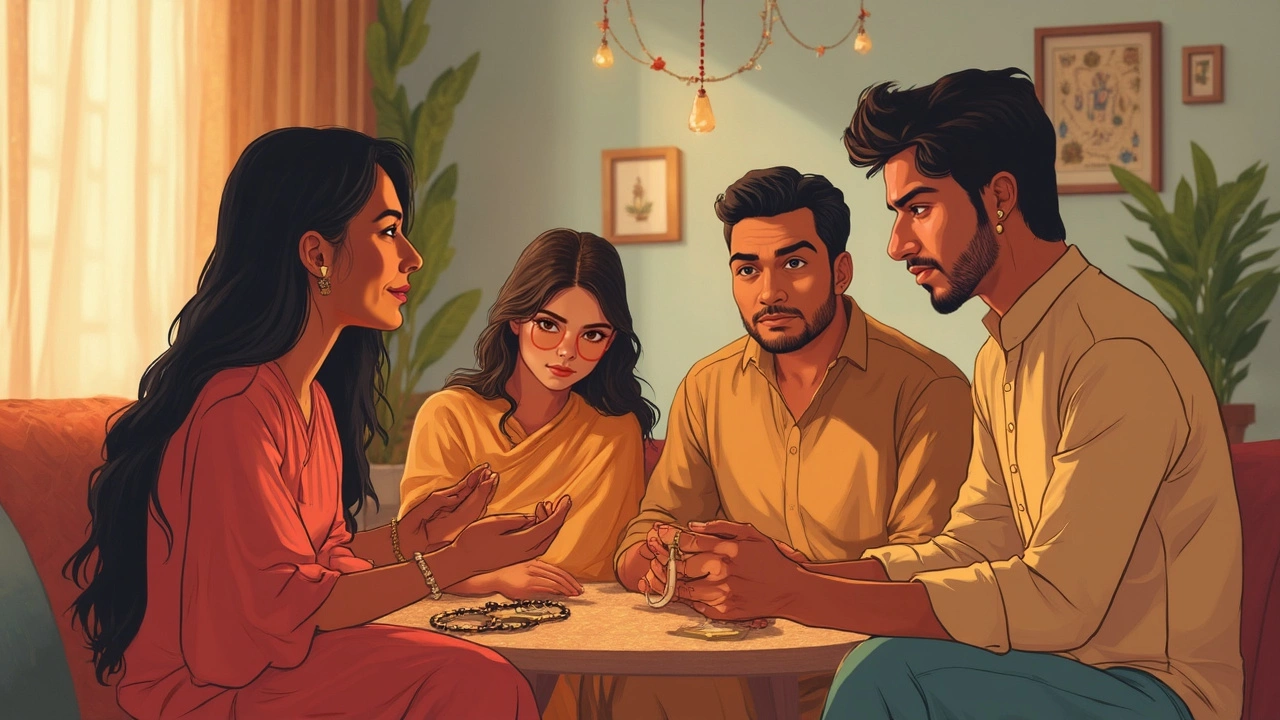
How Culture and Faith Mix in Daily Life
Daily life for many Muslims in South Asia is a mashup of faith and local tradition. It’s not just about prayer times or halal food—the question of what to wear, especially at weddings, brings up interesting choices. The mangalsutra, with its black beads, is a big part of Hindu wedding culture, but you’ll see some Muslim women wearing similar styles either because of family expectations or just wanting to fit in with friends and neighbors.
This blending of black beads Islam and neighboring traditions doesn’t always cause problems, but it can lead to confusion. Some folks might wear black bead jewelry just to mark marriage or ward off evil. Others might avoid it, worried it doesn’t fit with Islamic teachings, since Islam stresses intention and avoiding copying religious symbols of other faiths. There's no direct rule in the Quran or Hadith about the color black or black beads, but there are clear guidelines on not copying non-Islamic religious practices.
Let’s be honest: cultural mashups happen because people live side by side. Your grandma might say, "We’ve done this for generations, don’t question it." Your local imam might say, "Check your intention and stick with what’s Islamic." Both have a point, but what people actually do can depend a lot on their community, family, or even social pressure to not "stick out." This especially shows up at weddings, baby showers, or festivals where people from different backgrounds hang out together.
Check out some real examples (a survey from 2023 across Mumbai and Hyderabad):
| Custom | Muslim Households Practicing | Reason Cited |
|---|---|---|
| Wearing a mangalsutra | 28% | Family tradition, social acceptance |
| Skipping mangalsutra | 52% | Religious caution |
| Mixing styles (plain black beads, bangles) | 20% | Fashion or convenience |
If you’re ever in doubt, here are a couple practical steps to keep your choices clear and respectful:
- Ask elders or a trusted religious leader for their take, but consider your own intention too.
- Know that Islam focuses more on intention than strict looks—so if you’re just wearing black beads for fashion or as a symbol of marriage without copying religious rituals, most would say that’s fine.
- Cut out religious pendants or specific Hindu icons to avoid confusion.
It’s a balancing act between respecting your roots and your faith. Families blend what’s around them all the time. Just don’t be afraid to ask questions, and remember doing what feels right for you is worth just as much as "what’s always been done."


